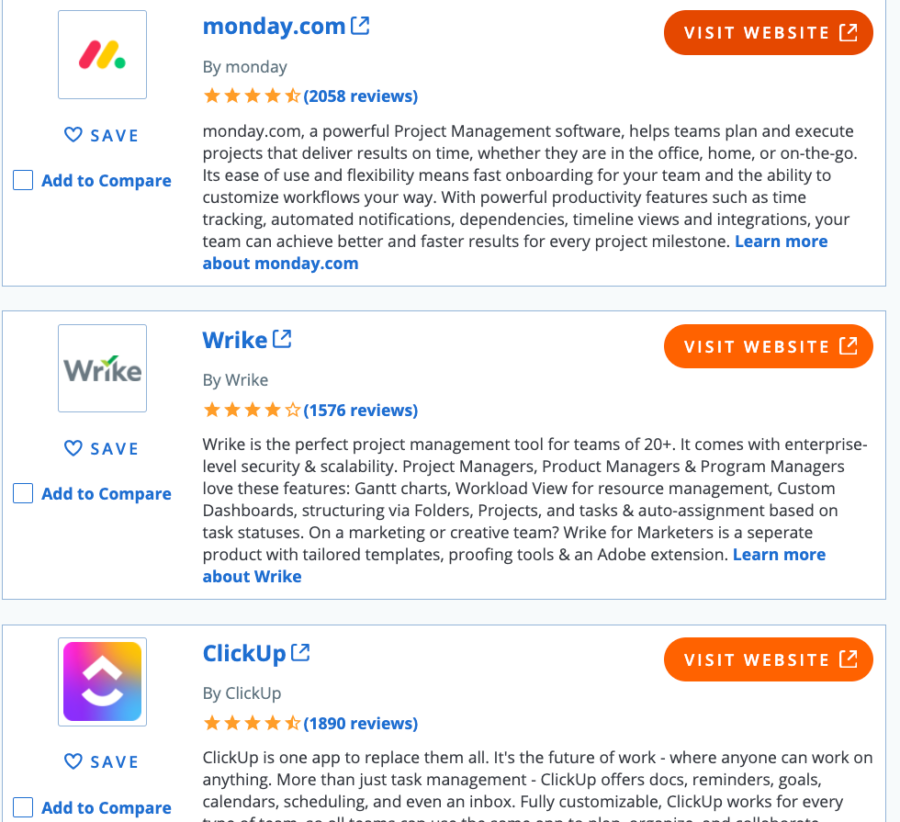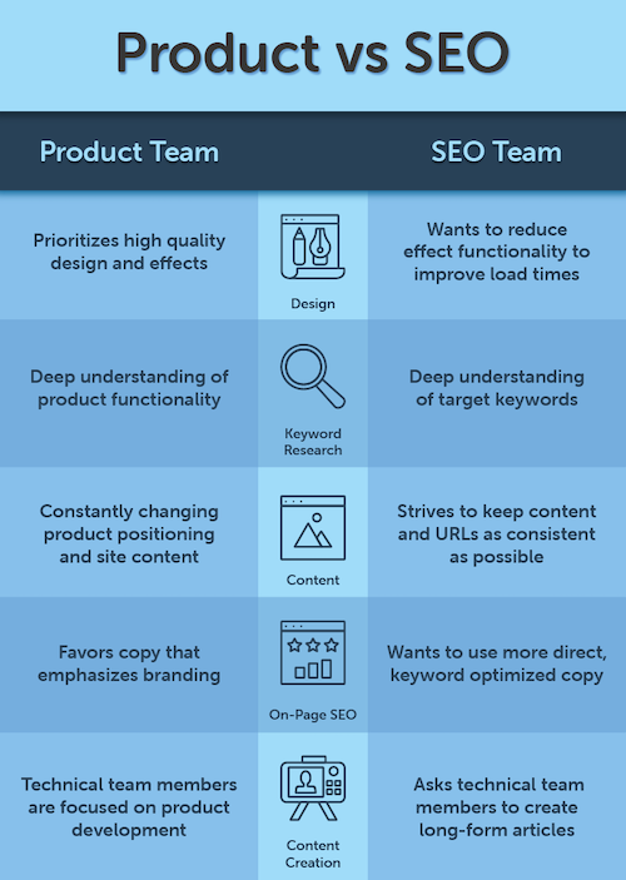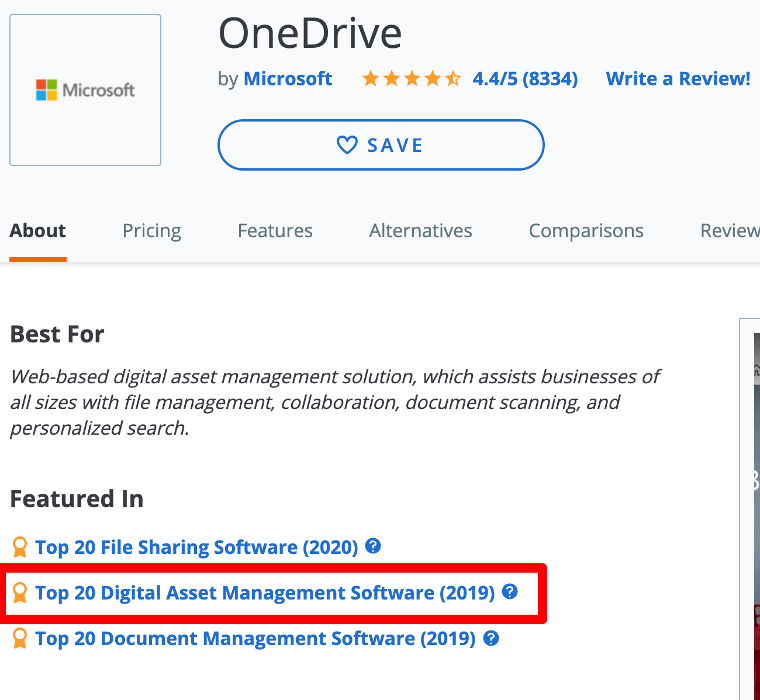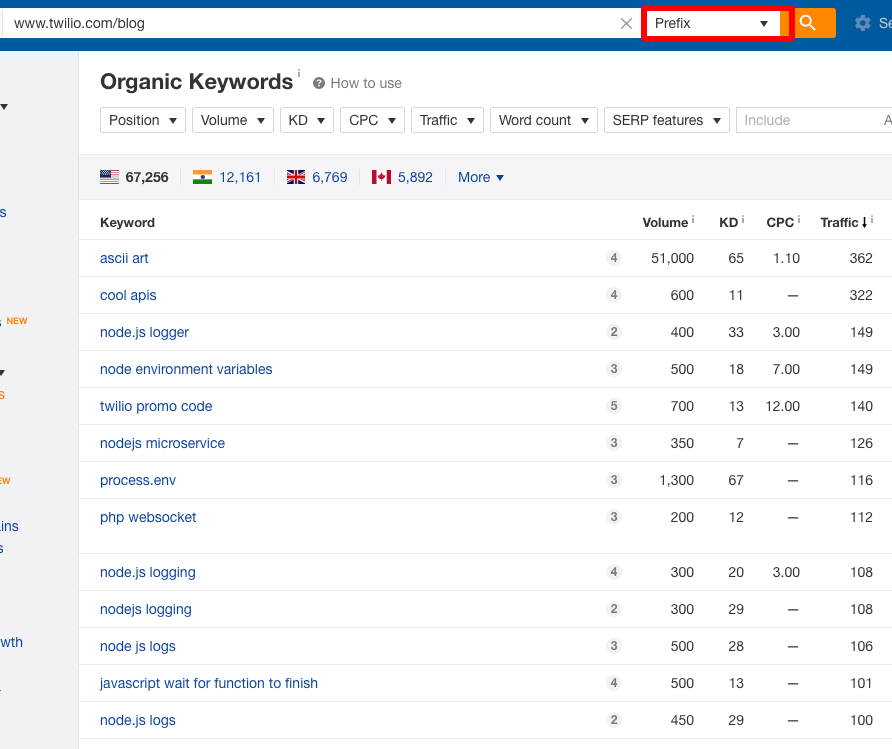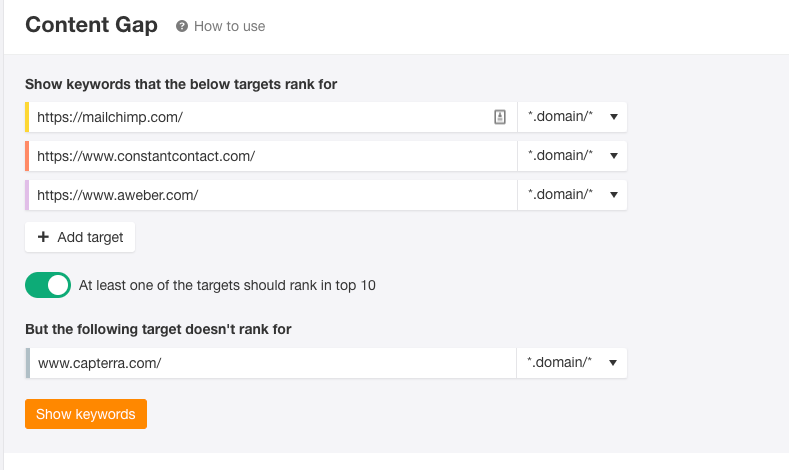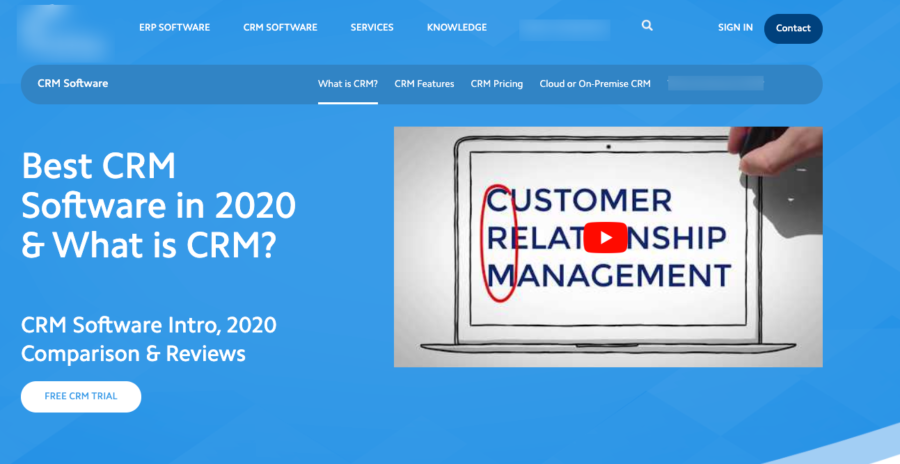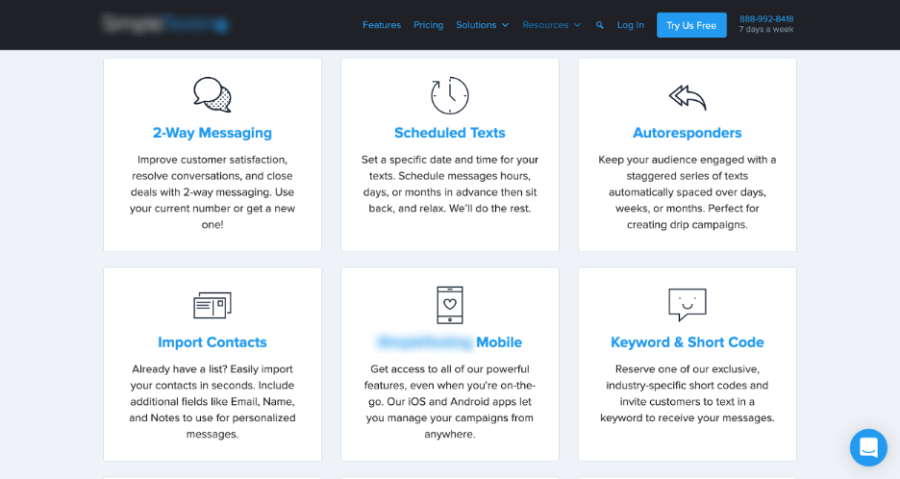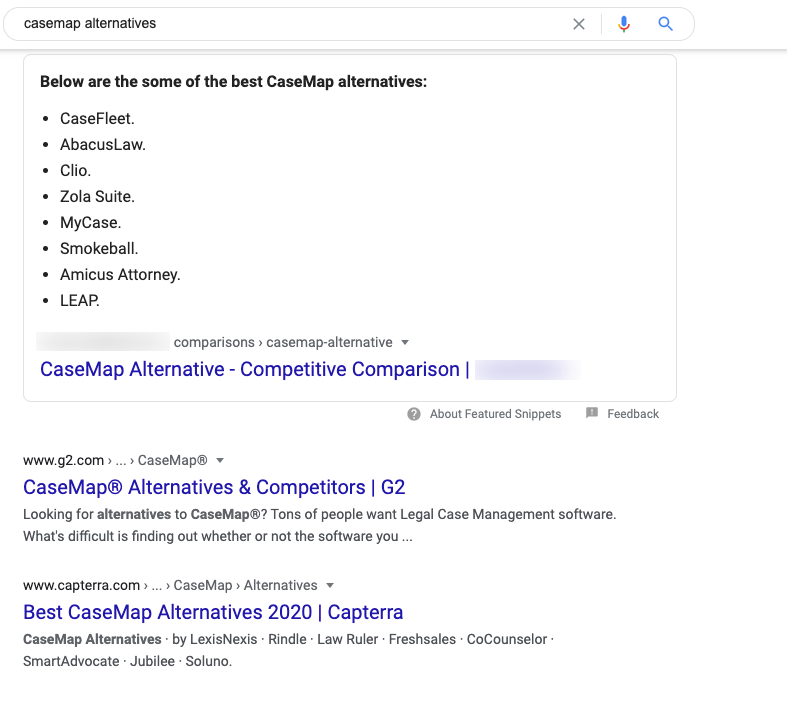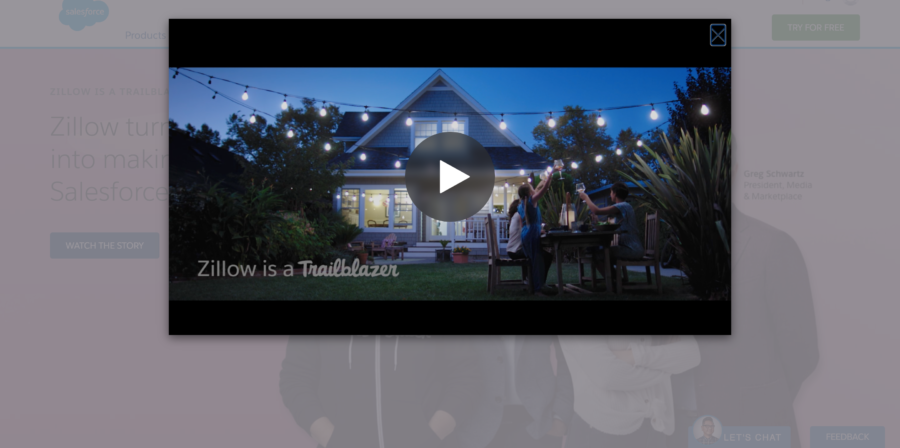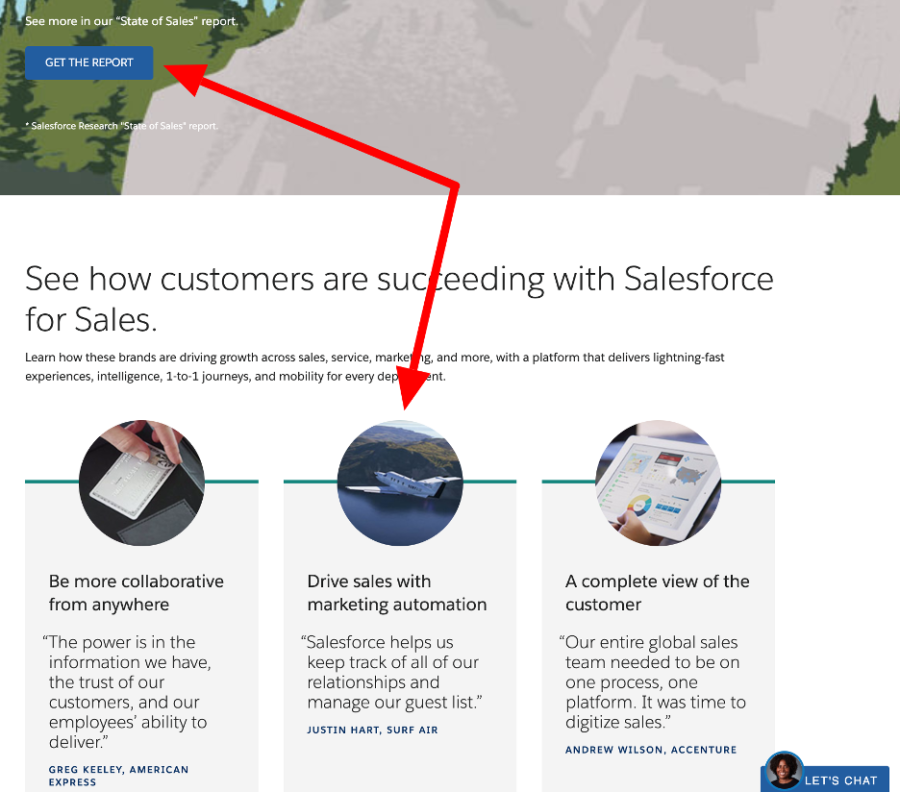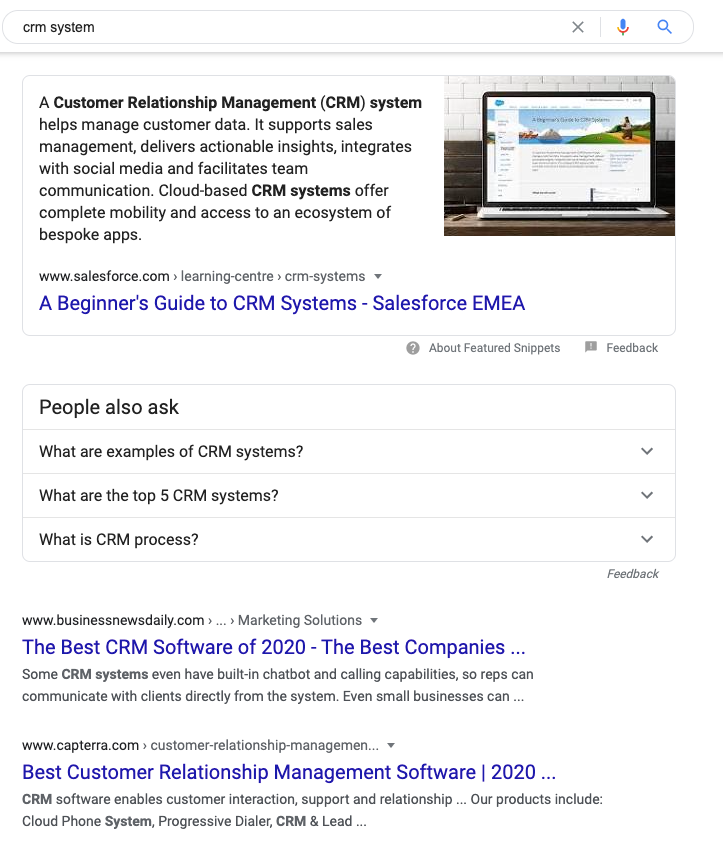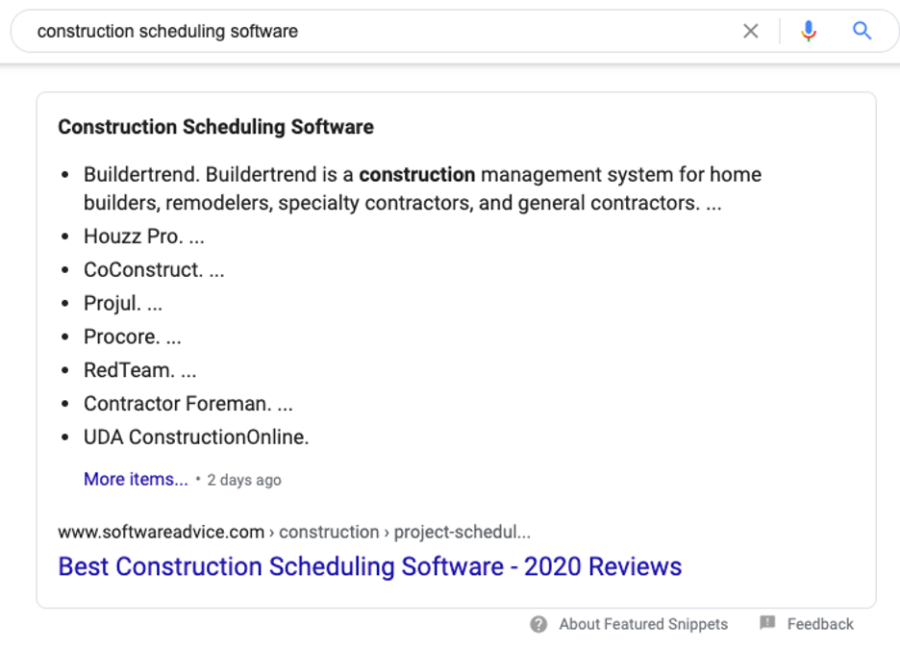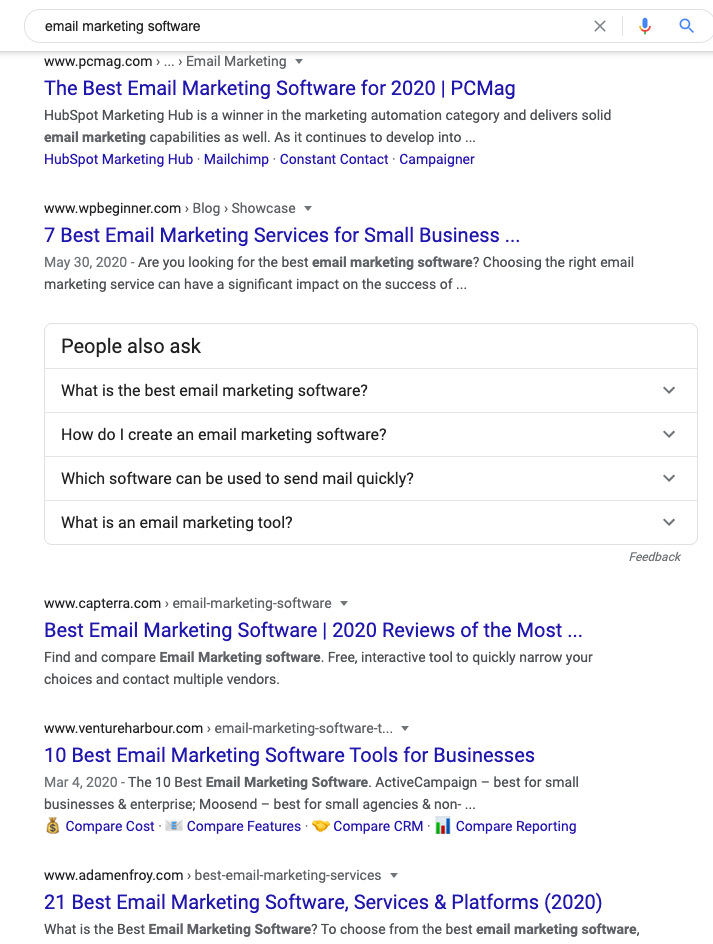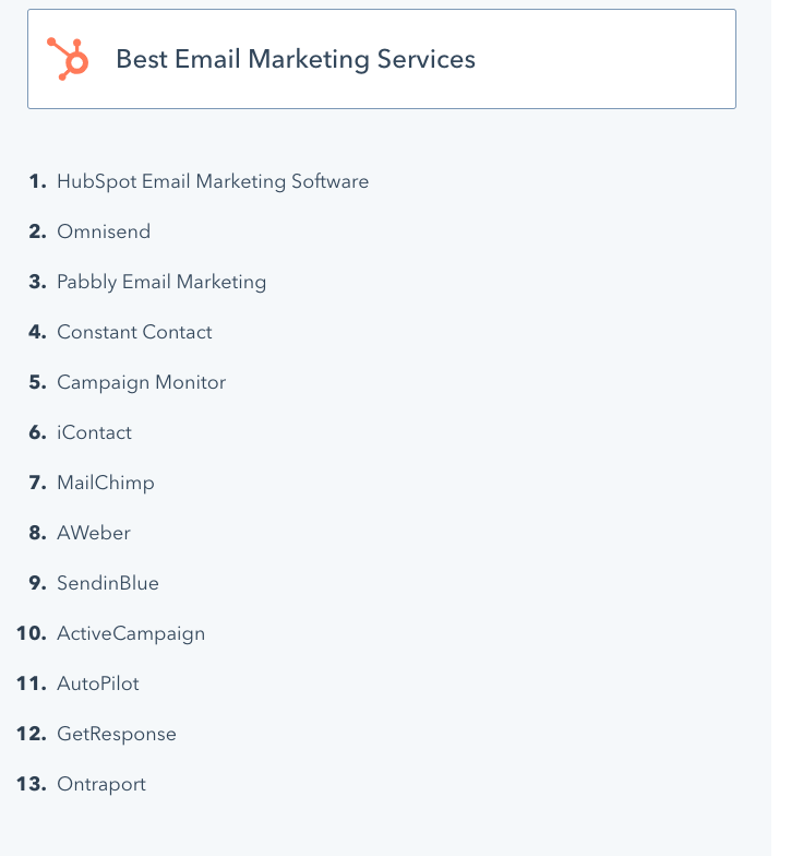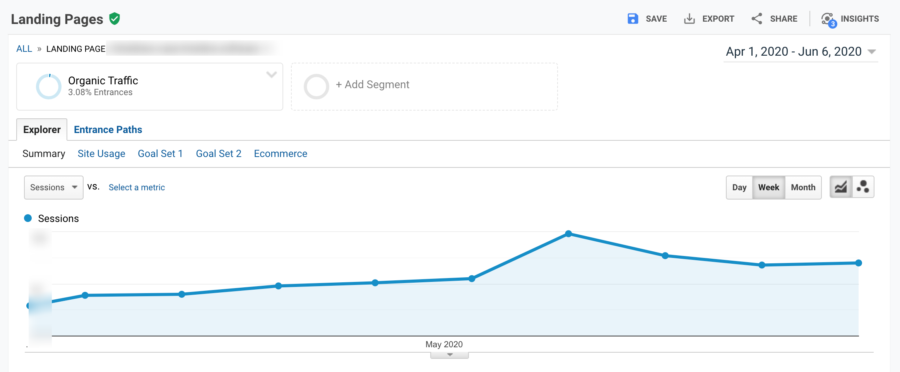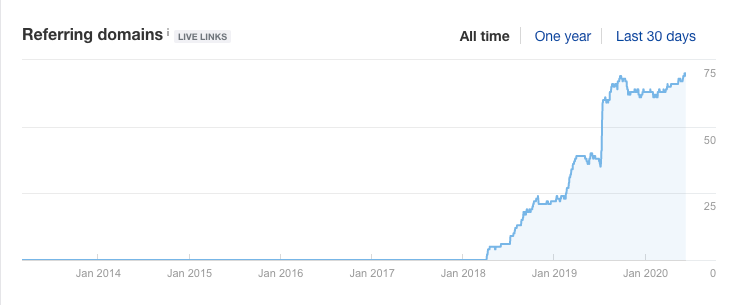Table of Contents
SEO for SaaS can be extremely challenging and seem daunting at times. In the SaaS space, there are generally much smaller search volumes for core product terms than there are for consumer products. Combine this with immense competition from aggregator sites and SaaS SEO can get very difficult very quickly.
Related Content:
Our SaaS SEO agency works with a good number of websites in the technology industry. Over the years we have developed a variety of strategies of what works well in the SaaS space in terms of improving SEO.
Below, you can find our recommendations on how to improve SEO for a SaaS website:
Table Of Contents:
- What Is SaaS SEO
- What SEOs Should Understand About SaaS
- Keyword Research
- Landing Pages
- On-Page SEO
- Blog Content
- Link Building
- Case Study
- Conclusion
1. What Is SaaS SEO?
SaaS SEO is the marketing practice of improving the organic visibility of SaaS websites on search engines. Common SaaS SEO strategies include creating key landing pages, rich content integration, and finding blog opportunities. The most common challenges in SaaS SEO include competition from aggregator sites and limited search volume.
In this post, we’ll go over best practices for how to better compete in search as a SaaS product. We’ll cover ways in which you can find keyword opportunities that are likely to drive conversions while facing less competition from aggregator sites. As well, we’ll walk through different types of pages that tend to work well on SaaS websites.
2. What SEOs Should Understand About SaaS
While many SEO fundamentals apply here, there are definitely some special considerations that need to be taken with SaaS SEO campaigns. Below are the ones that we encounter the most:
Competition From Capterra
To start, let’s address the 800 lbs gorilla in the room.
Capterra is a behemoth when it comes to organic search. They have an incredible presence all throughout the SaaS industry. As of now, their “Software Categories” contains 750+ different categories which speaks to how far their reach extends.
Not only has Capterra built out extensive landing pages for a huge number of verticals, but these pages also tend to rank extremely well for very competitive keywords. While this might be frustrating, the truth is that these pages are often better answers to user’s queries.
If users are looking for a “project management software”, they likely don’t only want to see one product page. They probably want to sort through hundreds of different options. Additionally, they probably want the ability to drill down deeper and read descriptions, reviews, and costs associated with each solution. Capterra provides just that:
This is why it might often be unsuccessful to try to directly compete against them with a single product page. Their solution has a large variety of products while a vendor page will only contain a single one. Since users will generally prefer to interact with multiple solutions, Google will likely favor those pages. This is one of the most fundamental things to understand when running a SaaS SEO campaign.
Working With Product Teams
When collaborating with SaaS clients, the one thing that I think SEOs might miss the mark on occasionally is the ability to collaborate with the product team. With many SaaS campaigns, there will often be conflicts between the goals of the SEO and product teams. For instance, here are a few examples:
Of course, these are broad generalizations but we wanted to paint the picture of how the goals of these two teams differ.
When managing SaaS SEO campaigns, we think it’s critical to understand these differences between your goals and the product marketing team. This will help you better understand why your recommendations might receive pushback or get left by the wayside.
One of the key things SEOs should strive to do is to constantly communicate with the product team about their goals and KPIs. What language do they prefer to use on the site? Are they thinking about changing positioning soon? Do technical team members have the bandwidth to create content? These are all conversations that you should try to have to ensure that SEO and product are as aligned as possible.
Longer Sales Cycles
As an SEO, it’s important to keep in mind the longer sales cycles that SaaS companies face. A great study from HubSpot indicates that the average sales cycle for a SaaS product is 84.3 days. This means that users likely require multiple touchpoints with a particular product before making a purchasing decision.
As an SEO, be sure to keep this in mind and optimize for all stages of the user journey. If users require multiple brand interactions, you’ll want to think about what role search plays in the awareness and consideration stages as well as the purchasing stage. Don’t just focus on product pages. Higher-funnel content such as blogs can be extremely important for optimization recommendations as well.
3. Keyword Research For SaaS
Keyword Insights Using Capterra
From the start of an SEO campaign for a SaaS client, one of the challenges we most commonly face is determining the best keywords to target. While sometimes the answer might be inherently obvious (“accounting software”, “CRM software” etc), oftentimes there isn’t an immediately clear keyword to target.
This is because many SaaS companies offer extremely niche solutions that don’t have an immediately obvious keyword target. For instance, when talking with product teams to learn more about the company, we find they’ll often provide very specific answers such as “we help democratize data to empower users and transform their businesses.” While this may shed some light on the overall service offerings, a keyword target isn’t clear from the get-go.
Many times, competitor research falls flat as well. While there might be a handful of competitors that have optimized their pages, we often see that many of them do not have clear keyword targets.
Fortunately, the good news is that sites like Capterra have already done a lot of the keyword research process for you. By using Capterra to look up your own profile, you can start to easily get a list of keywords that make fantastic starting points.
For instance, let’s use Google Drive as an example.
It’s a technology that everyone is familiar with, but it might not be inherently obvious which keywords would define its core functions. However, by looking at their Capterra page, we can easily find some core keywords:
Looking at the breadcrumb, we can see that the primary category listed is “file-sharing software”. This provides us with a fantastic starting point of a keyword that encapsulates the overall value proposition of the technology. As well, on the page, we can see the “Featured In” section. This provides us with the keywords of “remote work software” and “document management software”.
Taking it a step further, we can also perform the same analysis on competitor pages. Navigating to the Microsoft OneDrive page, we can see that they have an additional category of “digital asset management software”. We can also add this to our seed list.
Looking at competitor pages works particularly well if your Capterra page is thin on categories or isn’t even set up yet. This also helps more easily demystify a particular SaaS’s offerings and categorize them into clear keywords.
While this process can provide a great starting point, you’ll definitely want to go more in-depth. The drawback is that Capterra will already have pages created around these terms so you know there will be strong competition.
From here, I like to branch off and perform more traditional keyword research. This involves plugging these keywords into Google and finding other high ranking competitors. From there, you can start to dig into more long-tail keywords by using tools such as Moz/AHREFs to find keywords that might be valuable to these competitor sites.
Google Ad Data
As well, at the start of SaaS SEO campaigns, I think it’s also crucial to dive into the client’s Google Ad data if they’ve been running campaigns. If goals have been set up properly, this can provide phenomenal insights into which keywords actually drive results.
While generally, we’ll look closely at keywords that have resulted in things like signing up for a free trial, it’s important to evaluate keywords that have resulted in a variety of goals. Below are some examples of goals we’ll use to track a keyword’s success:
- Trial sign-ups
- Scheduling a demo
- New account creations
- Phone calls
- Email subscribes
- Chatbot interactions
Remember, SaaS products have longer sales cycles so it’s important to focus on keywords that move users further down the funnel and not just ones that result in sign-ups & demos.
Not surprisingly, you’ll often find a large amount of branded keywords in here. In addition, we often see that “chart” and “template” keywords can perform quite well. It’s important to collect all of the keywords that are performing well in terms of conversions and add them to your master keyword list. You can then find pages to optimize or recommend ways to fill content gaps.
Analyzing Competitor Blogs and Resources
The next thing to look into is analyzing competitor blogs and resources. You can do this by using a tool like AHREFs and using the “Prefix” option to see all of the keywords that a competitor blog or resources section ranks well for.
For instance, if I was analyzing Twilio as a competitor, I can see that keywords such as “node.js logger” (400 MSV) and “node.js logging” (300 MSV) are driving a good amount of traffic to their blog.
We can see that their “Guide to Node.js Logging” is ranking well for a larger set of keywords. Additionally, one of the great things about this keyword is that looking at the SERP, we don’t see Capterra anywhere:
If we determined that this content was relevant to our target audience, it might be a great idea to create our own resources to compete for this less-competitive keyword.
We really love this approach because you can quickly see all of the higher traffic keywords competitors have created informational content around. Oftentimes keywords in these sections tend to be longer tail, which means they have less competition from sites like Capterra. One of the great ways to gain visibility in SaaS SEO is to compete in the longer tail where Capterra has less of a presence.
Capterra Gap Analysis
Finally, it might be worth running a content gap analysis on Capterra. Generally with content gap analyses, you’re trying to find opportunities where competitors are ranking but you are not. In this analysis, you’re trying to find opportunities where competitor sites are ranking well but Capterra is not.
For instance, if we were a client in the email software vertical, our gap analysis might look like this:
Here we can see that we are analyzing where some of the biggest players in the space are ranking well but Capterra is not in the top 10 results. After filtering out branded queries we can see that Capterra isn’t ranking for results such as “email newsletter”, “email templates”, or “free email marketing”. These might be great opportunities to look into as Capterra does not have content with a significant amount of visibility here.
4. Landing Page SEO For SaaS
Now that we’ve identified the core keywords that we want to go after, the next step is to ensure that the site’s landing pages are optimized for those keywords. When it comes to SaaS SEO, there are a few types of pages that are key.
Product Pages
Product pages are generally considered some of the most important on a SaaS site. They generally highlight the SaaS’s primary service offering and target some of the most competitive and highest volume terms (“CRM software”, “sales software” etc).
Due to the immense competition for some of these product pages, they are often the ones that are the most difficult to rank. Keywords mapped to these pages tend to have a lot of competition from aggregator sites. If any product pages are ranking well, they tend to put a huge emphasis on landing page design and the amount of content on the page.
Overall, product pages may be much harder to rank than most other content on the site. This doesn’t mean that you shouldn’t put SEO effort into these pages but you may need to be realistic about the results. This is going to depend on the strength of your current SEO, search intent of the mapped keywords and your resources at hand.
If you do decide to put effort into these sections, here are some elements we think help make great product pages.
- 1-2 above the fold CTAs
- Platform demo video
- High-quality platform screenshots
- Solution benefits
- “What Is [Solution]” section (for the featured snippet)
- Case studies internal links
- Brand image trust signals
- Competitor comparison table
- FAQ section
If you have the resources to build out an extremely strong product page, it can certainly be worth the time. For example, we’ve worked with one of our clients to significantly improve the content of their CRM software landing page by incorporating many of the above elements.
As of this writing, this page has moved from ranking on the second page for the term “CRM software” to the first page. We believe that one of the keys to this ranking improvement is the quality of content contained on this page. This page provides one of the best answers in the SERP about all the things users should consider when looking for a CRM solution.
Features Pages
Features pages are extremely important to SaaS sites. Their primary objective should be to list out all of the individual features that a product provides.
In an ideal situation, a page will exist for every unique feature that the platform provides. For instance, here is a site that does a fantastic job of listing all of the different features that their SMS platform offers:
Of course, this will create indexable pages that have the ability to rank to users searching for those features.
While it might be more difficult to compete for keywords mapped to product pages, building out features pages allows you to connect with users who are looking for very specific functions. Once again, this might allow you to surpass sites like Capterra that haven’t built specific features pages that can compete in the longer tail.
Industries Pages
As well, building out “Industries” pages can be another great option for SaaS sites. These pages list out a variety of industries that can benefit from the platform. This helps users in different verticals see how the platform helps with their specific needs.
For example, the same client above has built out several “Industries” pages for their SaaS. You can see that they have created pages to show users how their SMS platform can help users in different industries such as fitness, real estate and church.
In terms of SEO, this helps better connect with users who are searching for industry-specific solutions. The query “church text” has a search volume of 4,400 MSV. Because they’ve built an industry page around this term and optimized it well, they now receive the featured snippet.
Similar to Feature pages, Industry pages can work well because there isn’t a ton of competition from aggregator sites like Capterra. The SERP for “church text” is filled with other SaaS competitors and no aggregators have first-page visibility. This makes it a great lower competition target for this platform.
“Alternatives” Pages
Finally, we’ve found that creating “Alternatives” pages can also be a fantastic landing page for SaaS SEO. We’ve found that creating and optimizing these landing pages are a great way to connect with some users who have eliminated a potential competitor but are looking for a similar solution.
For instance, here’s an example of a situation where a client has created and optimized an “Alternatives” landing page for a competitive solution. Within the content, they’ve created a table that provides a side by side comparison between the two technologies. This allows users to directly see the differences between both solutions.
As well, towards the bottom of the page, they have created a bulleted list of the top alternatives to this platform. While they have had to mention competitors in this content, they also made sure to include their own technology on this list.
The result is that the client has captured the featured snippet for the “alternative” term.
This is another great way to be able to better compete with SaaS aggregator sites. While it’s much harder to outrank them in the standard SERPs, it’s much easier to try to optimize for the featured snippet.
Of course, this strategy might not be for every SaaS company. Mentioning competitors on your site might go against brand guidelines or may just not be an avenue that you wish to pursue. However, there is definitely opportunity to rank and generate traffic for those that choose this strategy.
5. On-Page SEO For SaaS
Now that you have an idea of what your landing page strategy is going to be, let’s take a look at on-page SEO strategies for SaaS websites. While many times the basic rules of on-page SEO still apply, there are definitely some things we run into on SaaS sites more often than others.
Using “Software” Keywords
To me, this is the first one that stands out because we run into this conversation in a lot of the SaaS SEO campaigns we run. When performing keyword research, you’re likely going to find that many of your core keywords utilize “software” terms. Even if this isn’t exactly what your solution does, users might not fully understand the nuances. They understand that they need some type of application to perform a certain function and “software” might be the term they arrive on to query that information.
However, we’ve had conversations with product teams who provide pushback on using this term on the site. Many times it’s because they don’t believe “software” is an applicable term that defines the product or they just don’t want to be branded that way. This can lead to a disparity between goals which we referenced earlier.
Unfortunately, there is no real clear answer on the best way to proceed. From an SEO perspective, using “software” terminology is generally what’s best in order to optimize for search. There’s already more limited search volume in the SaaS vertical and using “software” terms can give pages their maximum chance at visibility.
However, personally I’m also a firm believer that SEO should rarely take precedence over a company’s branding. While SEO is certainly an important component of any website, it is only a single piece of the puzzle. A company’s brand encompasses far more channels than just SEO. Generally, SEO should be used to support the brand and not vice versa.
To us, the key here is to have these conversations with the product team. It can be as simple as asking if they’re OK using “software” terminology on the site. If they’re not, learn why they believe it’s counterintuitive to their brand.
If you think it’s an absolute high priority, be sure to understand that you may need to make a strong case for these changes and educate the product team on how these adjustments can help with their goals.
Content Integration
Another common opportunity we find on SaaS websites, is to improve content integration. I can’t count the number of times we’ve seen SaaS clients do a fantastic job creating all of these different digital assets but don’t integrate them together properly. For example, it’s extremely common to see SaaS sites that have already created:
- Landing pages
- Case studies
- Testimonials
- Tutorial videos
- Testimonial videos
- Related blog posts
- Whitepapers
- Datasheets
When analyzing the site we can see that these digital assets are all siloed away from each other! The case studies can only be found in their own section, videos only live on YouTube and blogs can only be found in the blogroll. However, this is a big missed opportunity as integrating your content together can make everything stronger.
For instance, here’s an example on Salesforce. We can see that they have included a link to one of their case studies on a product landing page.
When navigating to the case study page, we can see that they have a “Watch the Story” CTA at the top. Clicking this button loads a video that highlights this case study:
On another “Persona” page, we can see they continue to do a great job of integrating their content. Below the above the fold content they include links to a relevant whitepaper and user testimonials:
Salesforce provides a fantastic example of how all of your different content types can be integrated. They don’t just let their content sit in separate sections of the site, they do a great job of including it on other relevant pages where these digital assets will strengthen the UX of the page.
Looking for opportunities to better integrate your content can be a fantastic way to improve your overall UX, SEO, and conversions. It can definitely be higher priority because oftentimes it doesn’t require new content to be created. You can improve the quality of existing pages by using the assets you already have.
Featured Snippets
In our experience, there tend to be a large amount of featured snippets in the SaaS space. Google seems to use a lot of paragraph featured snippets that pull in definitional content for keywords around SaaS terms. Using the featured snippet can also help you easily beat out aggregators. For instance, notice how Salesforce uses the featured snippet to jump over Capterra for the term “CRM system”:
Getting proficient with formatting your content to get paragraph featured snippets is a great way to catapult your result to the top of the SERPs. While improving standard ranking positions is a much more resource-intensive job, featured snippet optimization often only requires some text adjustments.
Below you can find my general rules for how to capture paragraph featured snippets with more consistency:
Google also shows a lot of bulleted list featured snippets in the SaaS industry. This will often contain a list of top solutions for a particular category. For instance, here we can see a featured snippet for the term “construction scheduling software”:
While this is pulled from an aggregator site, this is definitely an opportunity for other results to rank. Companies who are willing to add competitors to their landing pages might be able to grab similar list featured snippets. You can see an example of this in the above “Alternatives Page” section.
6. Blogging Strategy For SaaS SEO
During the writing of this article, I stumbled upon this fantastic Crawling Monday video featuring Jackie Chu, Matthew Howells-Barby, and Aleyda Solis. The episode provides a great breakdown of the challenges of SaaS SEO from phenomenal SEOs who work in the space.
During the podcast, Matthew Howells-Barby made the following statement:
“This is probably the number one area I see people wasting time, resources, cash is trying to get their product pages to rank that nobody wants a single vendor product page to rank for.”
I 100% resonated with this sentiment.
The truth is that the SERPs are getting more and more informational. In SaaS SEO (but certainly in other verticals as well), we’re seeing more and more blog content rank for queries that were once thought to be transactional. This means the opportunity to rank for certain queries is actually in the blog and not for your product pages.
For instance, let’s look at a query for “email marketing software”. Looking at the top five results, we can see that there isn’t a single product page in site:
Instead, we can see that blog articles such as the “7 Best Email Marketing Services for Small Businesses” are ranking well. This is because that users searching this query want a list of options as opposed to a single product page. As Matthew mentioned, it’s going to be extremely difficult to rank your product page for this query since it doesn’t line up with the user intent.
We can see that HubSpot certainly takes their own advice. Their result “The Top 13 Best Email Marketing Services in 2020” ranks in the sixth position. This is ahead of one of the most well-known email marketing software providers, MailChimp, who is ranking in the eighth position.
Of course, this list requires HubSpot to use an alternative strategy and talk about competitors directly in their article. While it may be counterintuitive, it’s certainly their best chance at ensuring the brand has visibility for this keyword. Of course, they’ve made sure to include their own product at the top of this list:
Another benefit to this is if they ever claim a future featured snippet for this term, they’ll be appearing as the #1 email marketing software provider directly in the SERPs. This is a great strategy to immediately put HubSpot in the consideration process of a user’s buying journey.
Another great thing about a blog is it provides opportunities for you to create content where sites like Capterra won’t be competing. While they may have a stranglehold on many “software” related queries, the blog may be your opportunity to create content for your vertical where they have gaps.
For instance, when looking at AdWords data for a particular client, we found that the term “create legal timeline” was performing well for them. Naturally, this query isn’t mapped to a product page but instead informational blog posts.
As a long hanging fruit opportunity, we were able to quickly provide some optimizations which have significantly improved organic traffic for this high performing page.
Once again, since Capterra obviously doesn’t have blog content created for this topic it required far fewer resources to improve rankings. Looking for blog opportunities where Capterra and other aggregator sites don’t have visibility is a great way to find low competition opportunities.
7. Link Building For SaaS
At Go Fish Digital, we’ve long been advocates of the effectiveness of developing newsworthy tangential content for link building. Using tangential content follows a more traditional PR-based link building model. Instead of promoting content that’s directly related to your brand, using tangential content allows you to explore a larger set of ideas that are more likely to get picked up by publishers.
For instance, we’ve found a lot of success by creating data studies, maps, and surveys to create tangentially related content that we then pitch out to journalists. By keeping the content ideas more flexible, this allows you to ensure that your pitch is more in line with a topic that journalists are interested in covering. It also allows you to integrate current events into your content topic.
For example, here’s an example of a tangential data study we did for a client in the SMS marketing space around “Remote Working Statistics”. Knowing that there was a growing journalist interest in remote work, we were able to successfully pitch the content to generate 95 backlinks from 69 referring domains in about a year’s time. This included links from Medium, VentureBeat, and CenturyLink.
Of course, there are many other ways to build backlinks to SaaS sites. However, we believe that tangential content is a tried and true method that we have consistently seen perform well for our clients.
8. A SaaS SEO Case Study
To round it out, I wanted to show a case study of a SaaS SEO client we’ve worked with. This client provides SMS marketing software to small and large businesses. We’ve worked with them extensively on applying some of the best practices mentioned above including:
- Building out “Features”, “Solutions” & “Industries” pages
- Content integration
- Featured snippet optimizations
- Identifying blog opportunities to rank for core keywords
- Link building using tangential content
The result is that they have seen dramatic increases in rankings and organic traffic throughout the past two years. Since July 2018, we’ve seen a +41% lift in our tracked keywords that are ranking on the first page:
Of course, part of this success can be attributed to standard SEO best practices which we have implemented alongside these more specialized recommendations. However, we believe the combination has been very powerful in terms of their ability to significantly improve visibility in the SERPs.
9. Conclusion
SaaS SEO campaigns can be extremely difficult. With smaller amounts of search volume, less product-focused intents, and increasing competition from software aggregators, the SaaS SERPs are getting more and more competitive. However, it is definitely possible to improve ranking and organic performance. By focusing your efforts on improving the overall UX of the site and discovering areas where you can compete, you should find yourself having more success with a SaaS SEO campaign.
If you know of other SEO strategies that have worked well for SaaS sites, please let me know in the comments!
Search News Straight To Your Inbox
*Required
Join thousands of marketers to get the best search news in under 5 minutes. Get resources, tips and more with The Splash newsletter:
